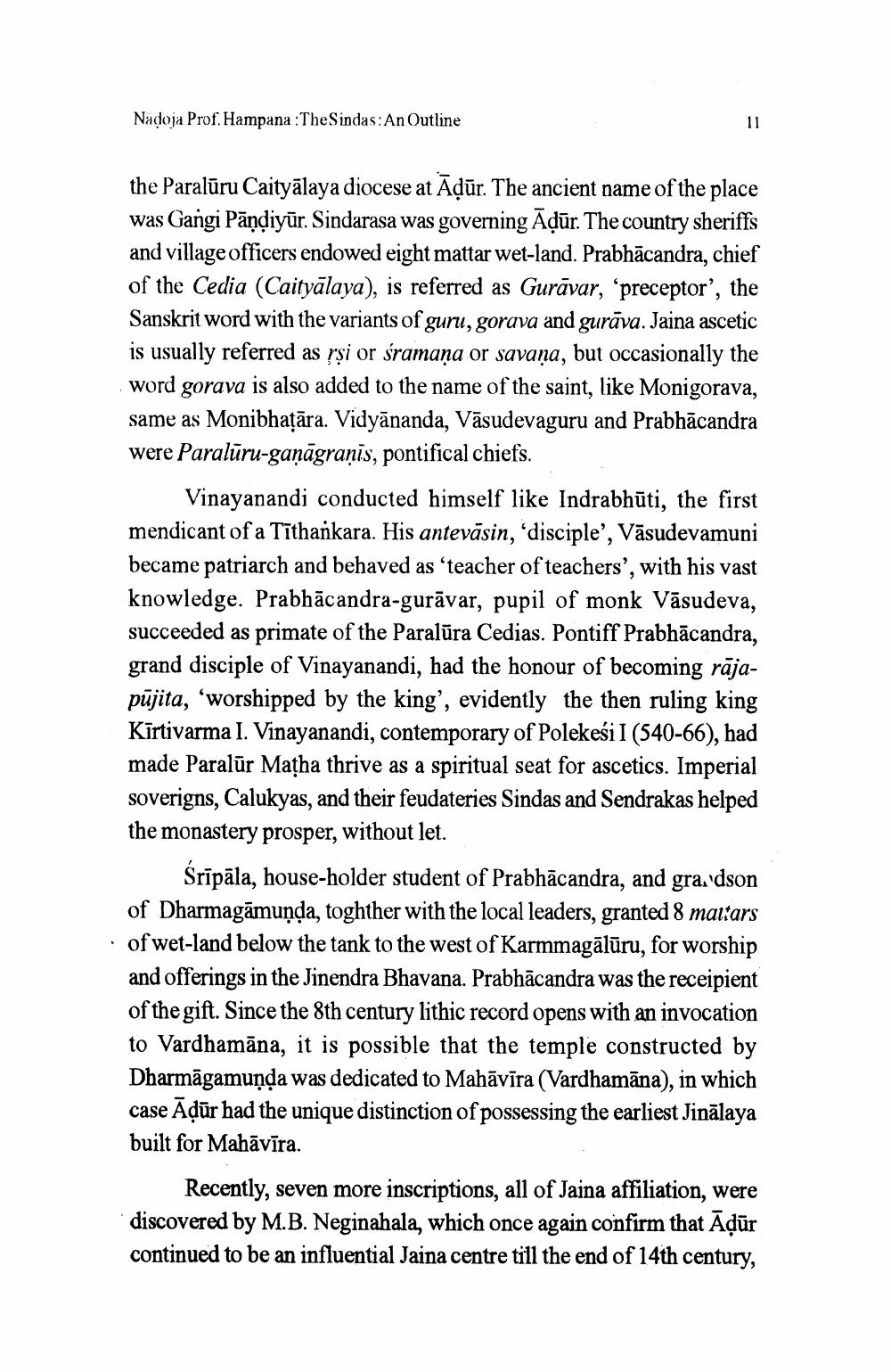________________
Nadoja Prof. Hampana :TheSindas:An Outline
the Paralūru Caityālaya diocese at Ādūr. The ancient name of the place was Gangi Pāņdiyūr. Sindarasa was governing Āļūr. The country sheriffs and village officers endowed eight mattar wet-land. Prabhācandra, chief of the Cedia (Caityālaya), is referred as Gurāvar, ‘preceptor', the Sanskrit word with the variants of guru, gorava and gurāva. Jaina ascetic is usually referred as ļși or śramaņa or savaņa, but occasionally the word gorava is also added to the name of the saint, like Monigorava, same as Monibhatāra. Vidyānanda, Vāsudevaguru and Prabhācandra were Paralūru-gaņāgranīs, pontifical chiefs.
Vinayanandi conducted himself like Indrabhūti, the first mendicant of a Tīthankara. His antevāsin, 'disciple', Vāsudevamuni became patriarch and behaved as “teacher of teachers', with his vast knowledge. Prabhācandra-gurāvar, pupil of monk Vāsudeva, succeeded as primate of the Paralūra Cedias. Pontiff Prabhācandra, grand disciple of Vinayanandi, had the honour of becoming rājapūjita, 'worshipped by the king', evidently the then ruling king Kīrtivarma I. Vinayanandi, contemporary of Polekesi I (540-66), had made Paralūr Matha thrive as a spiritual seat for ascetics. Imperial soverigns, Calukyas, and their feudateries Sindas and Sendrakas helped the monastery prosper, without let.
Śrīpāla, house-holder student of Prabhācandra, and gra. dson of Dharmagāmuṇda, toghther with the local leaders, granted 8 maitars · of wet-land below the tank to the west of Karmmagālūru, for worship
and offerings in the Jinendra Bhavana. Prabhācandra was the receipient of the gift. Since the 8th century lithic record opens with an invocation to Vardhamāna, it is possible that the temple constructed by Dharmāgamunda was dedicated to Mahāvīra (Vardhamāna), in which case Adūr had the unique distinction of possessing the earliest Jinālaya built for Mahāvīra.
Recently, seven more inscriptions, all of Jaina affiliation, were discovered by M.B. Neginahala, which once again confirm that Aļūr continued to be an influential Jaina centre till the end of 14th century,




